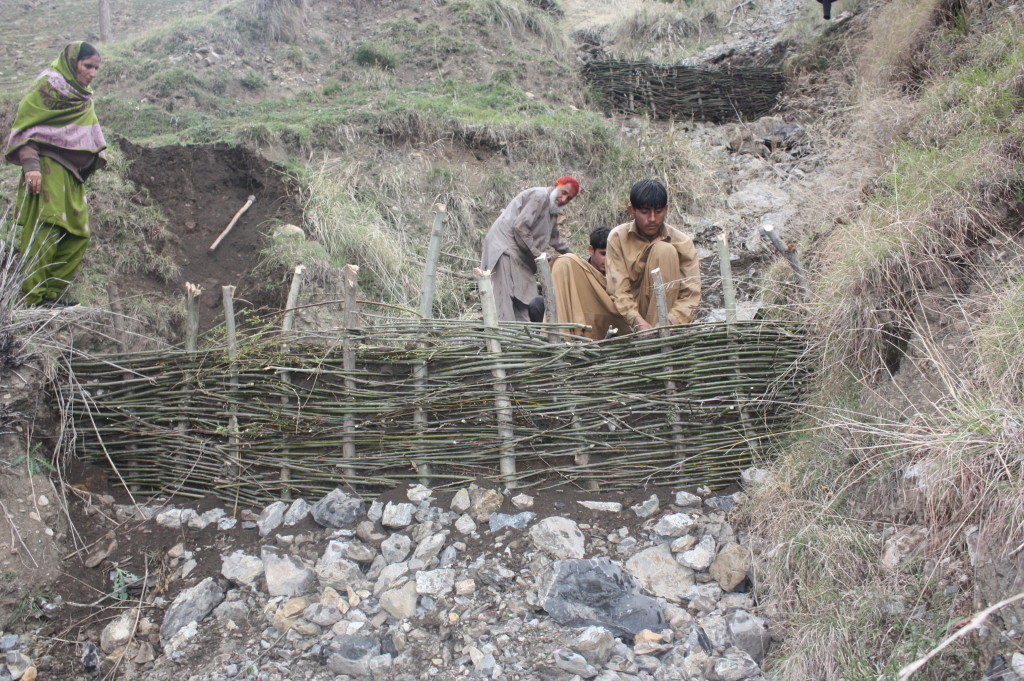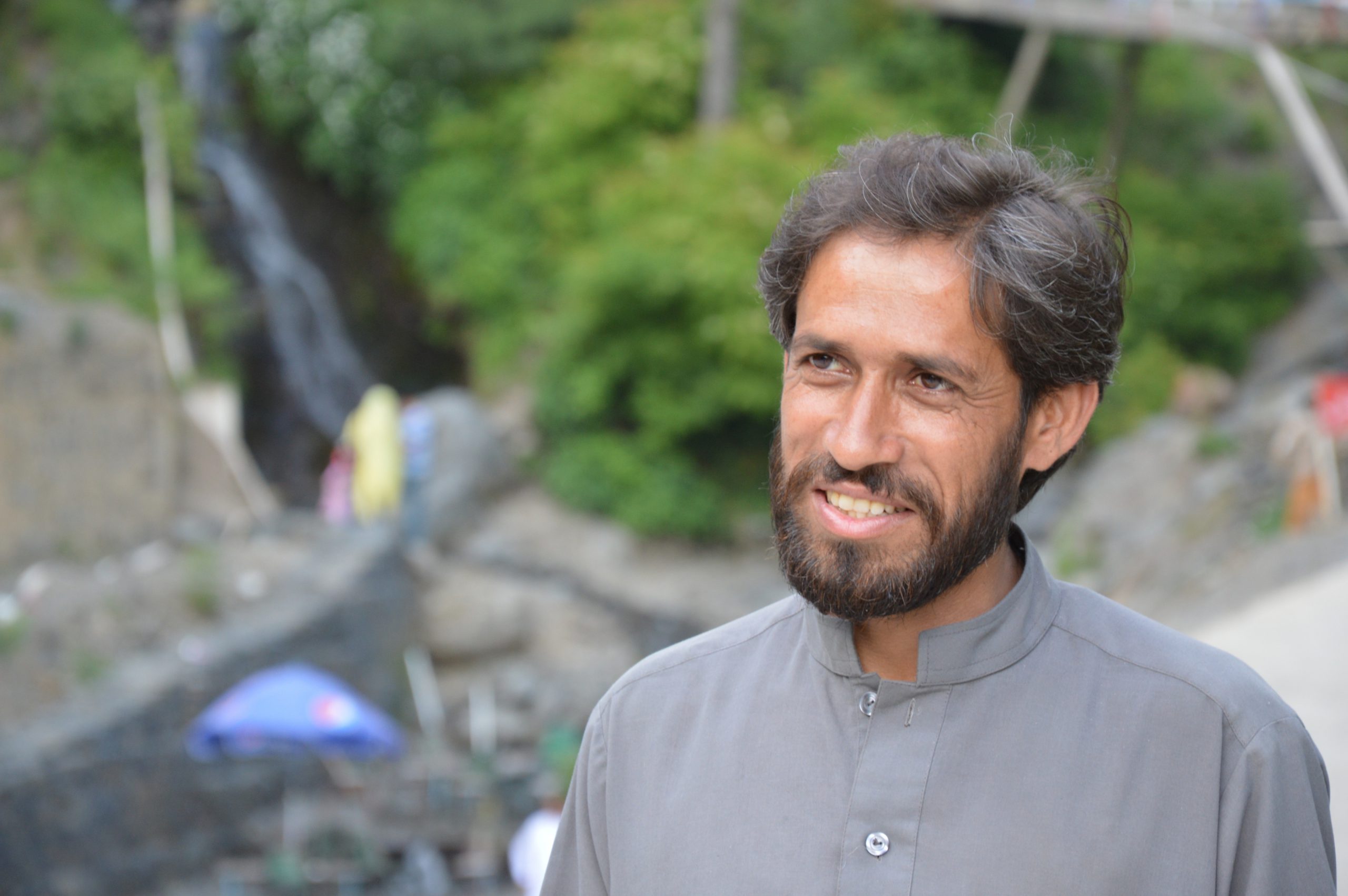It has been a renewal of life and livelihood for Muhammad Naeem, a vegetable grower in north Pakistan’s Namli Mera village who was about to give it all up and move to the city after shrinking water supply and pollution had made farming unviable. But the mountain stream has revived, the water quality improved and he is able to irrigate his four-acre plot with ease thanks to an innovative watershed management programme that has saved many farmers like him.
“Water supply from a centuries old natural sparkling spring in our area was shrinking, getting turbid and polluted because of rising deforestation in our mountain village. I realised that farming was no more viable and was thinking of abandoning it to migrate to Islamabad with my family in search of labour,” recalled Naeem.
Namli Mera, one of the villages located around the Ayubia National Park, about 80 km from Islamabad, was once popular amongst tourists for its gushing, cold and sparkling waters of natural springs. But many dried up over the years.
Spread over 33 square kilometres, the park in the western Himalayas is surrounded by 12 villages and the three towns of Nathiagali, Ayubia and Khanspur in Khyber Pakhtunkhwa province. The area is known for its coniferous trees and is home to over 750 species of plants – 81 of them with medicinal value – and 203 bird, 31 mammal and three amphibian species.
The impact of climate change on water availability, rainfall and snowfall are evident. But things are looking up for people like Naeem, who have given up their plans to leave their ancestral homes to move to nearby cities like Islamabad, Rawalpindi and Abbottabad after a Climate-Resilient Watershed Management Programme, launched in 2008 by the World Wide Fund for Nature-Pakistan (WWF-P) and funded by the Coca Cola Foundation, came into effect.

The introduction of improved irrigation practices and conservation of water at the household level, plantation of tree seedlings, application of bioengineering techniques for mountain slope stabilisation, piped irrigation and kitchen gardening in different villages inside the park are part of the programme.
Besides, the programme has also led to the regeneration of deforested areas with the help of local community members, who have been sensitised about the value of forest resources.
Taj Mohammad, a 60-year-old vegetable farmer in Khun Kalan village, is grateful for what it has done. Women in the village, he said, would earlier walk miles to fetch water from distant springs but not anymore. “Now, spring water is supplied to 300 families in the Lundi and Mandri hamlets of Khun Kalan village through a plastic pipe,” he told thethirdpole.net.
The area under cultivation has also increased substantially thanks to the sustained supply of irrigation water, he said.
“Shrinking water supplies had forced farmers in our village to stop cultivation of crops. But the area has increased from 40 acres to 150 acres and farmers now grow enough vegetables to meet their household needs and also sell in the market.”
The introduction of improved farming and irrigation practices among farmers in different villages has also helped in water conservation at the domestic and farm levels, added Sabiha Zaman, social mobiliser for WWF-P.
The watershed management programme, she said, had contributed to the sustainable flow of water for a sub-watershed area through different techniques such as plantation and loose stone check-damning of the streams at different points.
Under the programme, over 60,000 indigenous tree species of pine and 10,000 fruit trees have been planted in the last five years. This has helped tackle the problem of land erosion and land sliding. Besides, 20 hectares around the park have been protected through fencing to encourage natural regeneration of pines.
Scaling up the model programme
According to Jawaid Ali Khan, former director general of the Pakistan Climate Change Ministry, the results of the first model watershed management programme need to be replicated in other watershed areas in the upper Indus basin.
“There are about 250 sub-watersheds which drain into the Indus basin. Proper management of the watersheds in perspective of climate change impacts on them has become inevitable for sustainable water flows. The model integrated watershed management programme in the Ayubia National Park needs to be replicated in other watershed areas,” Khan told thethirdpole.net.
Pakistan, he said, had been blessed with natural resources such as springs and streams from the Himalayan, Karakoram and Hindu Kush mountain ranges. These mountains are vital watersheds from the ecological, social and economic perspective.
The upper Indus basin covers 40% of Pakistan’s land area, but supplies 90% of the country’s water. Downstream areas, where almost 75% of Pakistan’s people live, are critically dependent on water flowing from the basin.
Over the last 30 years, weather scientists and mountain researchers had noted with alarm changes in the annual precipitation, temperature and snowfall patterns in the Ayubia National Park. This had an adverse impact on watershed, biodiversity and livelihoods of local communities, such as agriculture and cattle rearing.
Community members had echoed the worries as they noted the lush green mountainsides becoming bare and increasing instances of mud floods and landslides as the slopes became unstable.
“But most of us still have no alternative and no option but to depend on forest resources, particularly firewood,” said Zulfiqar Ali. The 40-year-old has already abandoned his ancestral farm and now runs a motel in Namli Mera village to eke out a living.
He recalled that about 25 years ago, snowfall would start in early November, continue until the end of April and start melting in late May. Now, he says, it begins late December and ends by mid-March. In the last few years, the park area has received a few spells of hailstorm in April.
Taj Mohammad added that monsoon rains were plenty and winter snowfall about 10 to 15 feet just 10 to 12 years ago. But now rains have become increasingly erratic and declining. And with winter being mild, snowfall is no more than five feet.

Ghulam Rasul, senior weather and climate scientist at the Pakistan Meteorological Department in Islamabad, is concerned about the changing weather patterns reflected in declining monsoon rains and winter snowfall and the trend of hotter summers and warmer winters.
In 1992, he said, annual rainfall in the park was recorded at a little over 2,500 millimetres. But this fell to 1,200 millimetres by 2012 – most of this in the July-September monsoon season.
“Snowfall has been highly erratic in the area. For instance, 74.3 inches snowfall was recorded in 2008, followed by 17 inches in 2009,” Rasul said.
He blamed soaring deforestation, a growing population in and around the park and the increasing number of tourists.
In 2005, a WWF-P study on mountain springs in and around the park revealed that six of 23 springs had completely dried up and flow to the remaining was shrinking gradually due to decreasing plant cover.
Besides, many of these perennial springs, a source of clean drinking water, had become seasonal, resulting in water woes for local communities.
The study said much of the rainwater could not percolate down to recharge the springs and instead flowed downstream causing floods.
“Such a situation has grown from bad to worse as deforestation continues,” said WWF-P’s Muhammad Waseem, who is focal person for the watershed management programme.
“Deforestation has increased the risk of landslides in different mountainous areas of Pakistan, particularly in different valleys of the upper Indus basin. And the western Himalayan mountain areas inside the Ayubia National Park are no exception,” Waseem told thethirdpole.net.
Syed Said Badshah Bukhari, former secretary for environment of Khyber-Pakhtunkhwa province, added that land erosion, landslides and flooding were damaging mountain farming and other associated livelihoods.
